July 6, 2025

The primary aim of this article is to delineate the essential steps required to develop an effective ABC data collection sheet for Applied Behavior Analysis (ABA) therapy. It underscores the critical nature of systematically documenting Antecedents, Behaviors, and Consequences. This practice not only deepens the understanding of behavioral patterns but also significantly enhances therapeutic outcomes. Evidence supports the assertion that structured data collection leads to notable improvements in adaptive behavior.
Understanding the dynamics of behavior is crucial in fields like Applied Behavior Analysis (ABA), where practitioners strive to create effective interventions. The ABC data collection sheet serves as a powerful tool in this process, meticulously capturing Antecedents, Behaviors, and Consequences to unveil patterns that inform treatment strategies. However, a pressing challenge remains: how can practitioners ensure that this vital tool is utilized effectively to maximize therapeutic outcomes? This article delves into five essential steps for creating an effective ABC data collection sheet, equipping professionals with the insights needed to enhance their practice and improve client results.
The abc data collection sheet represents a systematic approach that meticulously records Antecedents, Behaviors, and Consequences associated with specific actions. This method is essential in Applied Behavior Analysis (ABA), as it utilizes the abc data collection sheet to enable practitioners to identify behavioral patterns and triggers, thereby facilitating more effective interventions. By documenting what occurs before (Antecedent), the actions themselves (Behavior), and the subsequent outcomes (Consequence), practitioners gain critical insights into the context of actions. Such understanding is vital for developing tailored support plans and enhancing overall therapeutic outcomes.
Recent research underscores that the use of an abc data collection sheet significantly enhances modification techniques. For instance, children with the lowest baseline adaptive levels exhibited substantial gains in adaptive behavior after 24 months of ABA, achieving an impressive average increase of 4.46 points for each year of therapy. This finding highlights the importance of using the abc data collection sheet for organized information gathering in monitoring progress and adjusting interventions as necessary.
The influence of the abc data collection sheet on therapeutic outcomes is further corroborated by evidence indicating that ABA therapy boasts an over 89% success rate in treating autism spectrum disorder in children. By employing the ABC method, therapists can effectively analyze actions and implement strategies that lead to meaningful change. Notably, 1 in 36 children are identified with autism spectrum disorder, emphasizing the urgent need for effective ABA interventions.
As B.F. Skinner astutely noted, "Conduct is a function of its outcomes," which underscores the necessity of understanding the interplay between antecedents, actions, and consequences in behavior modification. Skinner's insights, particularly regarding the context of actions, further enhance the importance of ABC information gathering. Real-world examples illustrate its effectiveness; for instance, therapists have successfully utilized this method to improve communication skills and daily living abilities in children with autism, showcasing its practical application in behavioral analysis.
In summary, the abc data collection sheet is not merely a tool but a foundational element in ABA therapy that drives effective behavior modification and enhances therapeutic outcomes. With 66% of children referred for ABA therapy remaining in services for 12 months, the significance of in fostering sustained involvement in treatment cannot be overstated.
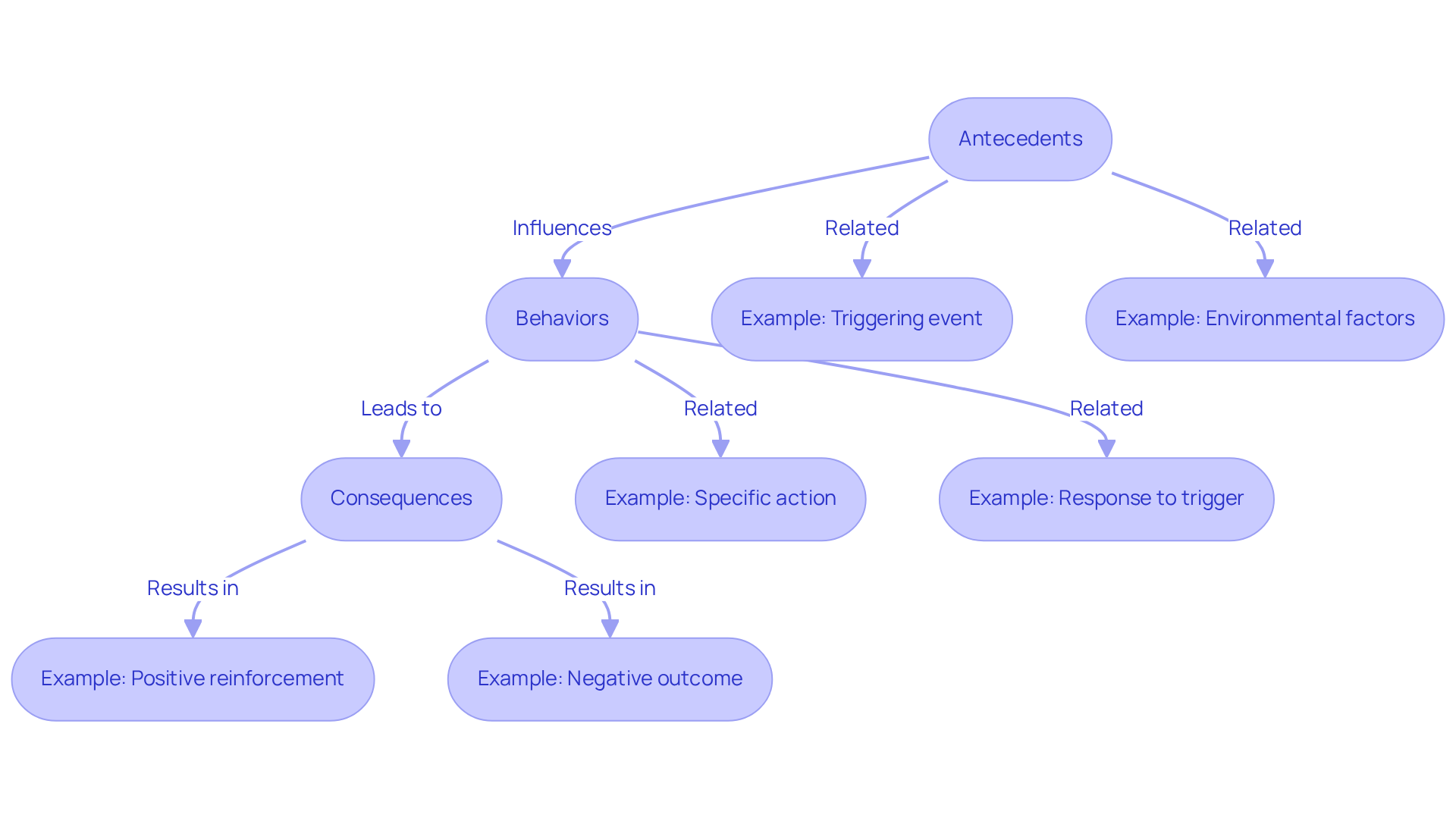
An effective ABC data collection sheet must encompass several key components to facilitate accurate and insightful data gathering:
Integrating these components into the ABC data collection sheet not only aids in efficient documentation but also enhances the overall quality of care in ABA therapy. Consistently examining this information, preferably at least weekly, enables practitioners to identify trends and modify interventions as needed. As emphasized, 'Ensure to examine the information consistently, at minimum once a week, to identify trends and modify interventions as necessary.' This practice ultimately for individuals receiving ABA therapy. For instance, in a case study involving a child named Alex, the ABC data collection sheet helped decrease mealtime tantrums by identifying sensory sensitivities, illustrating the practical advantages of utilizing the ABC data collection sheet. Effective communication among caregivers, educators, and therapists is also crucial, as it enhances the information gathering process and facilitates joint intervention planning.
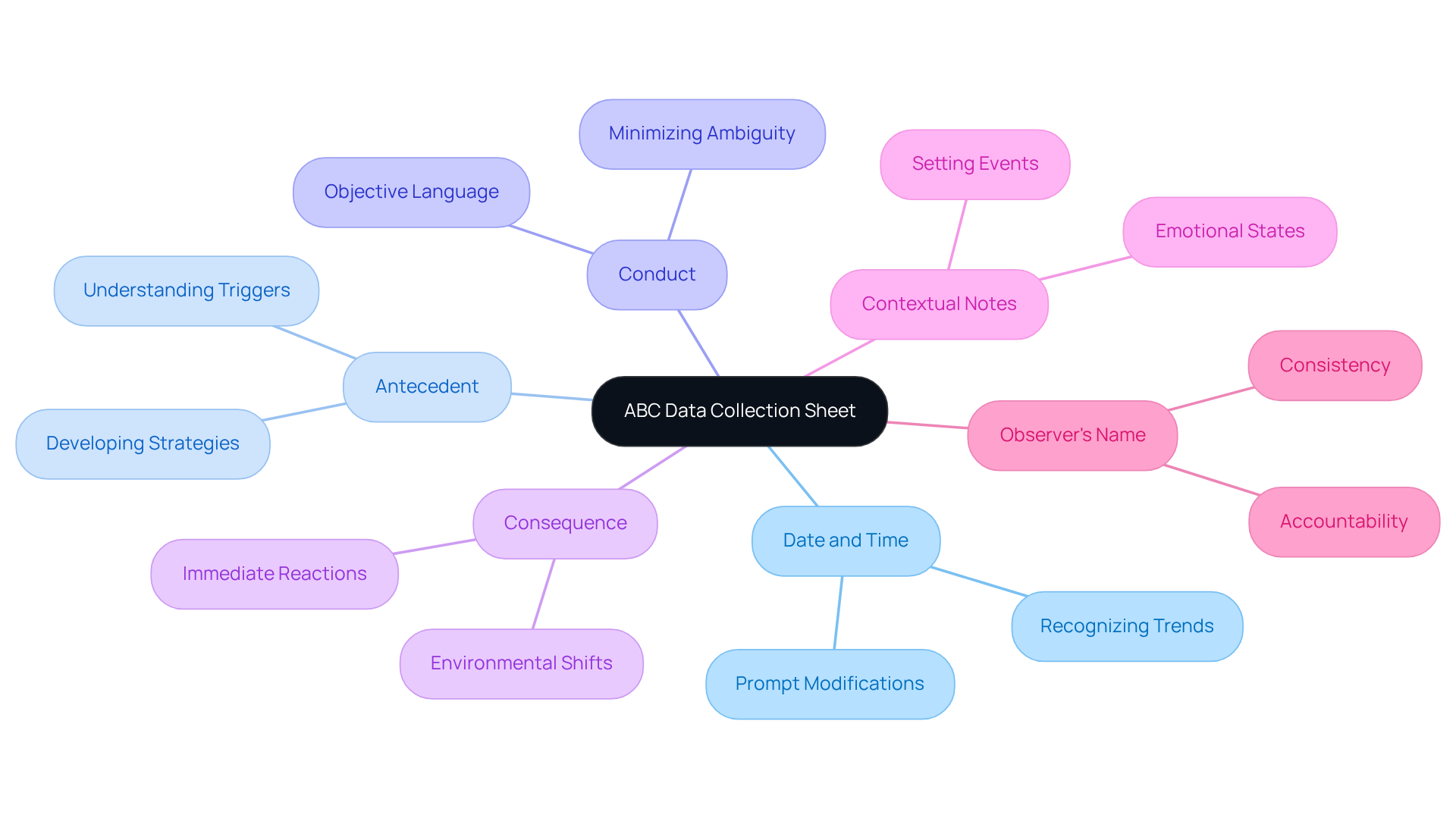
Developing an effective ABC collection sheet is essential for precise tracking in ABA therapy. Begin by selecting a format—digital or paper. Digital formats often facilitate easier information analysis and sharing among team members, making them a popular choice.
Next, design the layout of your sheet. Structure it with columns for key components:
This organization enables precise information input and evaluation.
Use clear labels for each column to prevent confusion during information gathering. Clarity is crucial for preserving the integrity of the data collected.
Additionally, include concise instructions on how to fill out the sheet, emphasizing the importance of objectivity and detail in observations. This guidance aids in maintaining uniformity in information gathering.
Before implementing the sheet in practice, conduct a trial run. This step allows you to assess its usability and effectiveness in real-world scenarios.
Gather feedback from the trial and revise as necessary to enhance clarity and functionality. Ongoing enhancement rooted in user experience is essential for efficient information gathering.
User satisfaction with the ABC data collection sheet is remarkably high, with based on 202 reviews. This feedback underscores the effectiveness of well-designed sheets in supporting ABA practices. Users have noted that these resources are not only easy to use but also significantly aid in tracking behaviors, making them invaluable tools for professionals in the field.
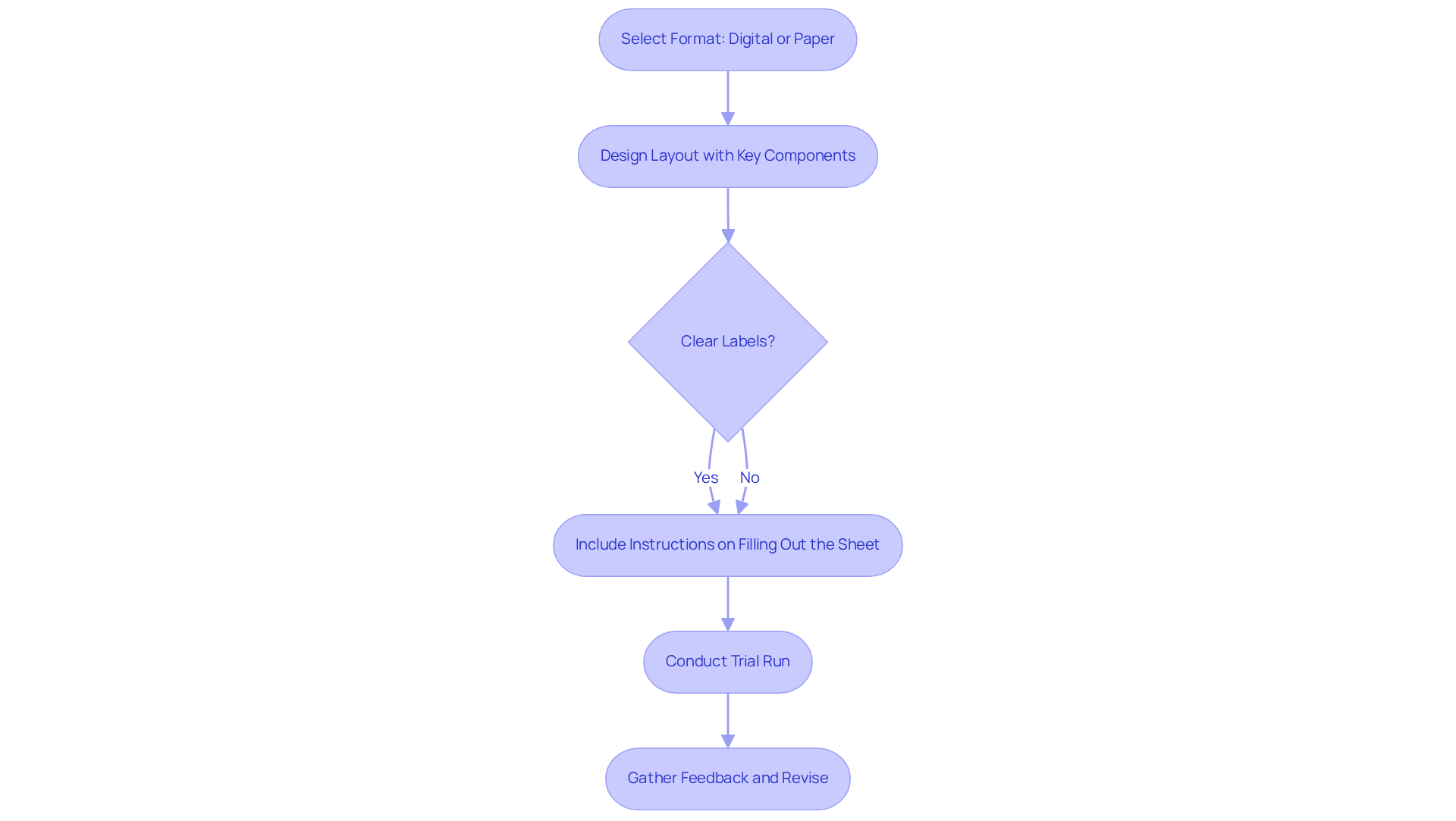
To effectively implement your ABC data collection sheet in practice, follow these essential steps:
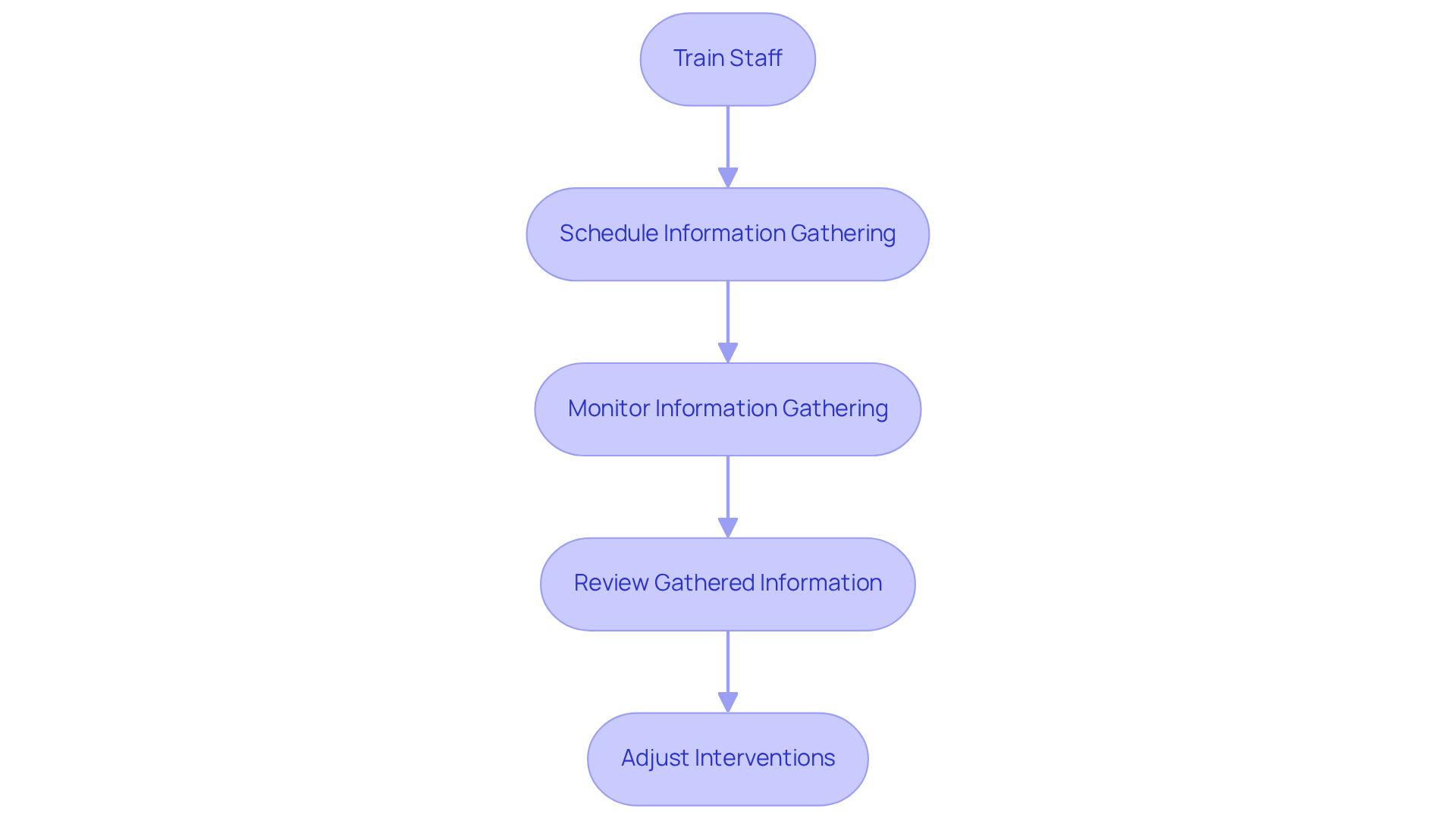
To troubleshoot common issues and optimize your ABC data collection, consider the following strategies:
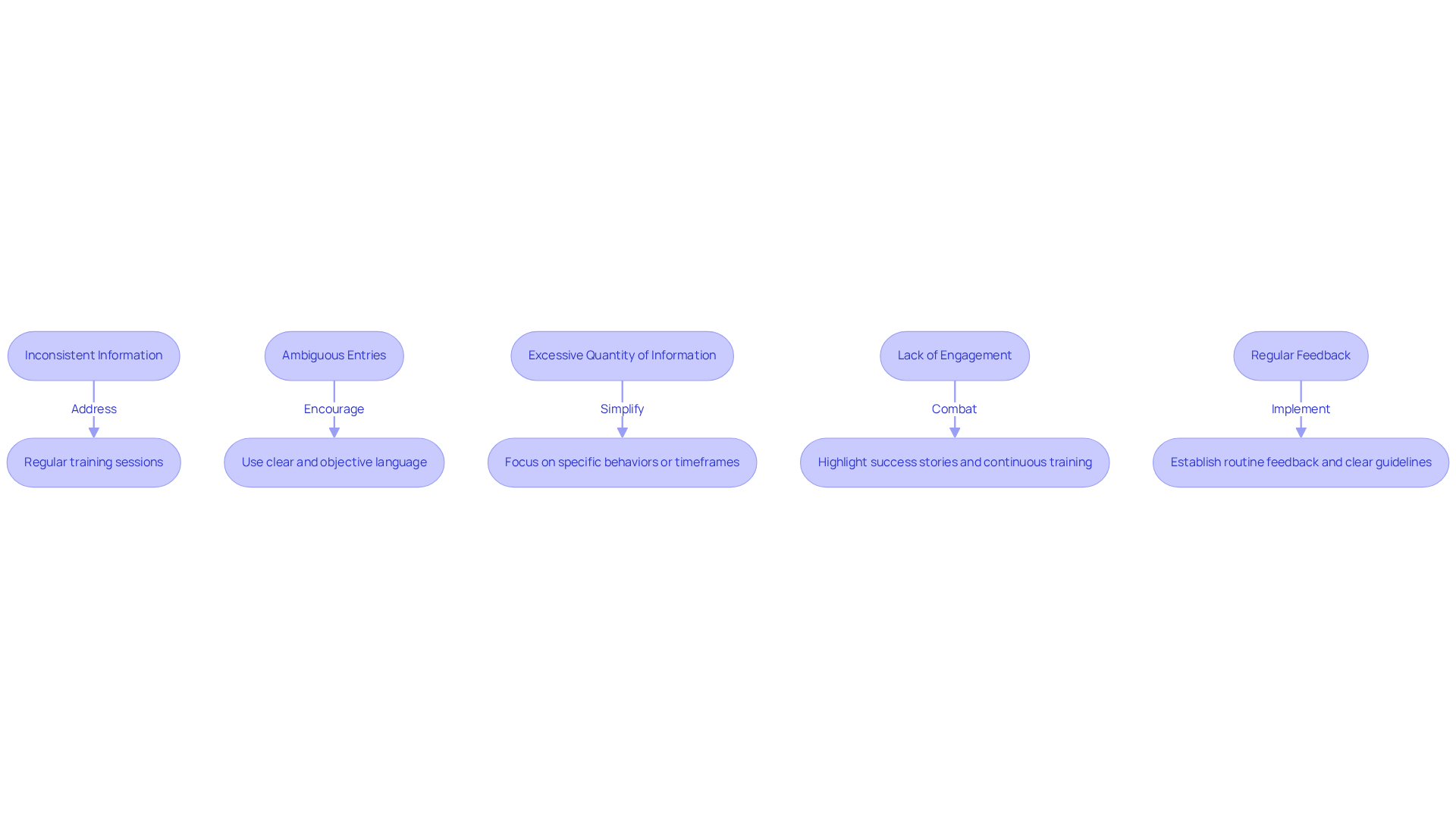
The ABC data collection sheet is an essential instrument in Applied Behavior Analysis (ABA), systematically documenting the Antecedents, Behaviors, and Consequences of actions. This structured methodology enables practitioners to effectively identify behavioral patterns and triggers, facilitating tailored interventions and enhancing therapeutic outcomes. It transcends mere data collection; it forms the bedrock of behavior modification understanding, ultimately elevating the quality of care for individuals, especially those with autism spectrum disorder.
Key components vital for an effective ABC data collection sheet have been outlined, emphasizing the necessity of:
Steps for creating and implementing the sheet were discussed, highlighting the importance of:
Additionally, troubleshooting common issues and optimizing the data collection process were addressed to ensure the integrity and reliability of the information gathered.
Given the compelling evidence supporting the efficacy of the ABC data collection sheet, it is crucial for practitioners to embrace this approach in their practices. By committing to systematic data gathering and analysis, professionals can cultivate a deeper understanding of behaviors, resulting in more effective interventions. Adopting this method not only improves individual outcomes but also contributes to the overarching goal of enhancing therapeutic practices within the field of ABA. The call to action is unequivocal: prioritize the implementation of ABC data collection sheets to effect meaningful change in the lives of those receiving support.
What is ABC data collection and why is it important?
ABC data collection is a systematic approach that records Antecedents, Behaviors, and Consequences related to specific actions. It is essential in Applied Behavior Analysis (ABA) as it helps practitioners identify behavioral patterns and triggers, enabling more effective interventions and tailored support plans.
How does ABC data collection improve therapeutic outcomes?
Research shows that using an ABC data collection sheet enhances modification techniques, leading to significant gains in adaptive behavior for children undergoing ABA therapy. It also contributes to an over 89% success rate in treating autism spectrum disorder in children.
What are the key components of an effective ABC data collection sheet?
Key components include:
How often should ABC data be reviewed and why?
ABC data should be reviewed at least once a week to identify trends and modify interventions as necessary, which ultimately enhances outcomes for individuals receiving ABA therapy.
Can you provide an example of how ABC data collection is applied?
In a case study involving a child named Alex, the ABC data collection sheet helped decrease mealtime tantrums by identifying sensory sensitivities, demonstrating the practical advantages of this method in improving behavior.
What role does effective communication play in ABC data collection?
Effective communication among caregivers, educators, and therapists is crucial as it enhances the information gathering process and facilitates joint intervention planning, leading to better therapeutic outcomes.
Our expert recruitment strategies and AI-driven sourcing ensure that you receive top-notch candidates quickly, without compromising on quality. Whether you’re looking for BCBAs, Clinical Directors, or RBTs, we’ve got you covered.